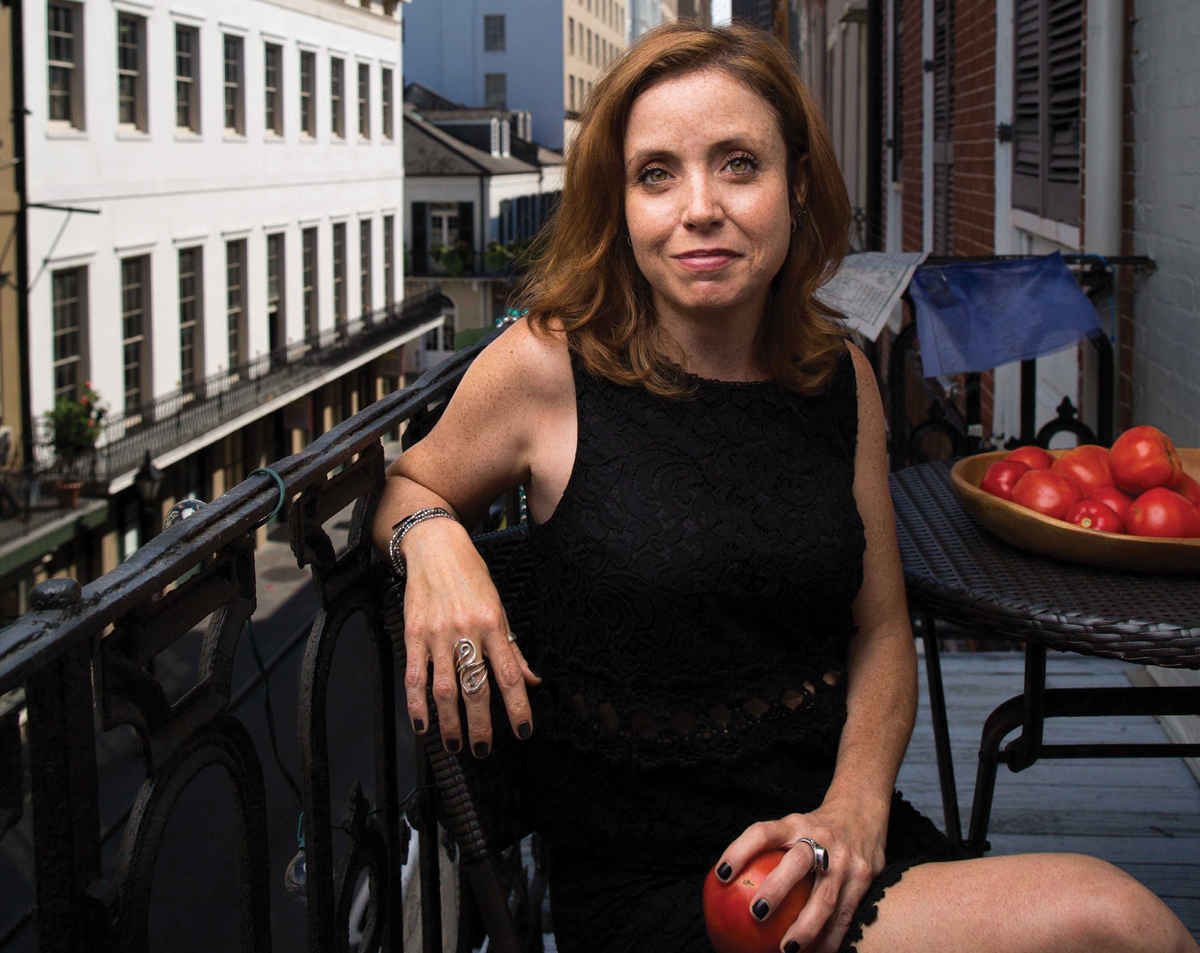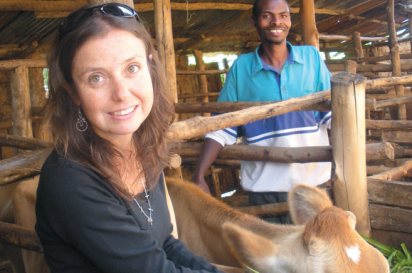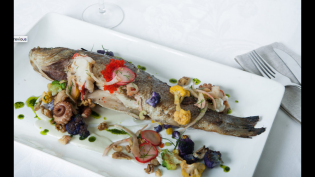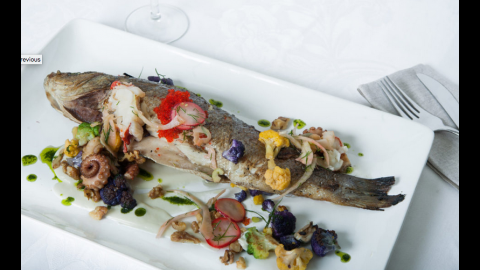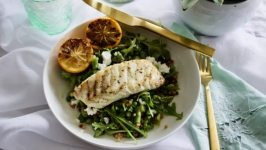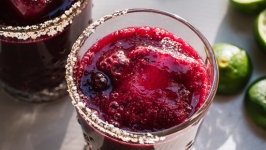Food Tank: A Q&A with Danielle Nierenberg
Food Tank calls itself the “Think Tank for Food.” A global community with a robust online platform, their vision works to “push for food system change.” Established in 2013 by President Danielle Nierenberg, the nonprofit offers information-packed newsletters, volunteer opportunities, yearly summits and an upcoming book, scheduled for release later this year. You can also become a member of the organization and engage in solutions-oriented conversations within the sustainable food movement from your desk.
“We try to be as interactive with folks as possible and we’re very open to engaging as much as time allows,” Nierenberg says, and she means it. She takes phone calls from people who have simple questions, like where to start with sustainable agriculture, and spent a lovely afternoon talking with me about Food Tank’s origins, how they stay positive in a “doom and gloom” food industry and what gives her hope—the core tenet of Food Tank—for a future of empowered, engaged and healthy eaters and farmers.
Q: Why did you create Food Tank?
Danielle Nierenberg: I was working for many years at an environmental think tank in D.C. Eventually, when I left I was the director of their food and agriculture program. We were really good at highlighting what wasn’t working and all of the problems. And in so many ways, you have to talk about the problems when you’re talking about the food system.
I was doing a lot of work interviewing farmers, scientists, women’s groups, chefs, nutritionists and policy makers all over the world. What I was hearing was a lot of hope and a lot of innovation that had potential to be scaled up and scaled out but wasn’t getting the investment, research and attention it needed. There were solutions; we just weren’t hearing enough about them. That was the real impetus behind it.
And to build a platform for the good-food movement, for different organizations to be highlighted and for them to feel like they can come to Food Tank and find non-biased information, that it can be a resource for everyone—from regular moms and dads to policy makers and business leaders. That platform is really important to us so that people feel like they can be critical, offer suggestions, call us out on things and build a dialogue through our daily articles and research publications.
And then being able to meet in person at our Food Tank Summits, where we’re bringing together unlikely suspects, like executives from McDonald’s and Cargill and Monsanto on the stage with food justice advocates having a real dialogue. There is a lot of demonizing when we talk about food issues. [We want] to really get people to talk to and listen to one another and understand that there is always going to be disagreement but that if we’re not all listening to one another, the things that we care about are never going to come to fruition.
Q: You touch on sustainable agriculture as key to your mission, but what is sustainable agriculture, how is it different or similar to indigenous farming practices and why is it so central to these global food issues?
A: Sustainable agriculture has so many definitions. For me, a sustainable agriculture system is one that is environmentally, economically and socially sustainable. One that is regenerative. It’s not just extracting resources from the land but putting them back in. One that is able to make farmers a fair wage and also provide accessible, affordable food to eaters, and that doesn’t treat farmers, food workers and women as slaves to the food system, but one that treats them respectfully and humanely. And that’s very different from the industrial system of agriculture.
When Food Tank talks about indigenous and traditional practices in other countries what we’re trying to highlight is that there are many of these practices that have a lot of potential, like rainwater harvesting, cover cropping, different irrigation practices that have been forgotten, and natural forms of fertilizing land as opposed to getting artificial fertilizer out of a bag. They’ve been ignored in favor of some technologies that offer a lot of promise but are very expensive.
One of the key things that we try to do is highlight both high and low technologies, and combine big data, which is a term that is being thrown around a lot now because of GPS and drones and all this great information that we’re able to collect. [We’re asking] how can you get it to farmers, whether they’re small and large? Like being able to harness the use of cell phones, which has grown so tremendously across sub-Saharan Africa and places like India, and having farmers being able to have access to data and information about weather systems and markets that they never would have before.
I think there are ways to not ignore the new and fancy things that are coming about, but to combine them with the things that we know already work.
Q: I read you joined the Peace Corps and worked in the Dominican Republic for two years, and you continue to travel the globe interviewing farmers. How has working with people from all over the world, particularly women farmers, influenced your perspectives on real solutions to climate change, obesity, malnutrition and poverty?
A: The thing about women farmers is that they’ve been invisible for so long, whether you’re talking about the United States or the global south. When people think of farmers they think of men, either male farmers tilling fields by hand or sitting on a combine.
They don’t understand that women make up nearly half of all farmers in the world. And in some cases, particularly in sub-Saharan Africa, they make up to 80% of the agriculture labor force. Yet they’re denied access to the same resources as men. They don’t get an education and extension services. They often are not allowed to own land. The bankers don’t listen to them, or [women farmers are] afraid to go to the banking and lending institutions.
The real opportunity here is that if we invest in and pay attention to women farmers, data from the United Nations Food and Agriculture Organization suggests that we could increase yields by 20 to 30% and lift as many as 100 million people out of hunger. So I think there is a real opportunity we’re missing there.
From my travels and my experiences with the Peace Corps, or I was just in Senegal recently, we really need to listen to the needs of women farmers and make sure they’re not ignored when you’re developing new innovations or new technologies, or when you’re concentrating on some of these more sustainable or traditional practices.
Q: Journalism about sustainable food and farming issues these days can be so mired in the negative. What values do you practice and hold close to help you and your team stay future-focused on positive solutions?
A: Oh gosh, that’s a good question. No one has ever asked me that. I think we try to talk to people who inspire us. When we get article ideas from our fellows and our interns I like to ask, “Who is your hero or heroine, who has inspired you? Why did you want to work here? What kind of person made you want to do this? Did you grow up on a farm, or in a city and always wanted to grow food on a rooftop?” It’s just about being able to get those ideas flowing. You know, there’s so much negativity. I get negative.
But I think because I get this opportunity to work with so many young people who are so passionate and so energetic … we started this fellows program last year to get really keen, excited, smart people on board for three to six months with a stipend. And talking to these candidates for the position yesterday, they’re so energetic and come from so many backgrounds. That’s honestly what keeps me going: having all these young people. I learn from them all the time.
Q: Tell me a bit about the journey of trying to eat well in your own community and what challenges you face as an eater and cook?
A: I love food. I wouldn’t be in this if I didn’t care about food. Food Tank talks so much about food loss and food waste. I have the same tendency that a lot of people have. Like, I see something beautiful at the farmers market or the grocery store, and I’m, like, “I want it,” but because I travel all the time, at least in the past, a lot of food used to get wasted.
So I’ve had to practice what we preach and find different ways to preserve the foods that I want, so making more soups and pickling. That’s been a journey for me, for sure. I want to make sure I’m following the same values that we’re putting out into the world.
Q: Is there a recent experience from your travels and work that makes you smile and have faith in creating, as your mission states, “a global community for safe, healthy, nourished eaters”?
A: There is one I think about a lot, and it happened several years ago now. It is the one that makes me smile the most. I was in Niger with this group of about 50 women farmers who were working with a research institute. They had built a community farm that they themselves ran. They were using solar drip technology to irrigate their crops, because Niger is very dry. They were growing a lot of fruits and vegetables but also ornamental and fruit trees to sell, which you can get a high price for.
One of the questions I always ask anyone I’m meeting is, “How did this innovation change you, what kind of transformation took place?” I was talking to these women and having it translated back to me. They would say things like, “I was able to buy my husband a bicycle so that he doesn’t have to walk to the land where he’s growing food,” or “I was able to send my children to school, because I couldn’t do that before” or “buy books or medical supplies.” And then, one of the women said to me, “We’re fatter now.” And these women are not fat. What they mean is they’re better nourished and eating a more diverse group of foods.
They were making more money. We forget farmers are businesspeople. These farmers were making about a dollar a day before they started this garden. Now each of them is making about $1,500 a year. That’s a huge increase.
And I think that’s what transforms things. Understanding that the food system has to be all of those things mentioned before— environmentally, economically and socially sustainable. And that project, for me, really encompasses all those things, and the fact that these women thought they were fat when they’re really not. They were just eating a lot better.
Learn more about Danielle and how Food Tank can become your food think tank at www.FoodTank.com


